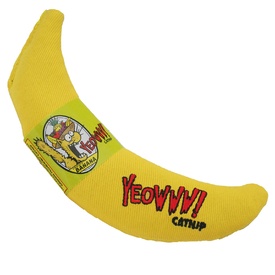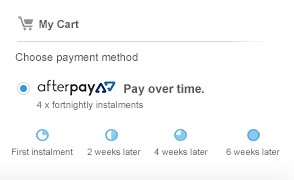

Clumps or Crystals? Choosing the best kitty litter for your cat
Whether you’re a new cat owner or an experienced pet parent who needs more guidance when it comes to choosing your feline friend’s cat litter, we’re here to help you by providing you with this detailed guide on choosing the right kitty litter for your cats. Read on to get all the tips you need for finding the best cat litter:
A Cat’s Fickle Nature Can Determine Their Litter Preference
Your feline can be quite picky about what type of litter they want to do their business in. Some cats may have sensitive paws or other physical limitations that can make your kitty want a specific type of litter. If you adopted your cat from an adoption center, ask the adoption center if your pet has any particular litter preferences or see if you can speak with the previous owners to find out more information about your cat’s habits. If you found and adopted your cat as a stray, you will have to experiment with different types of litter if your pet happens to be fussy about their litter.
Main Factors to Consider When Choosing Cat Litter
When you’re shopping for cat litter, keep the following key characteristics of cat litter in mind so that you can make it easier to pick the right one:
The Basics: Non-clumping vs. Clumping Litter for Cats
Most clumping cat litters have an ingredient called bentonite (comes in various forms like clay and mineral), which absorbs liquid (urine in this case) and forms into clumps, making it easier for you to scoop out from the litter box. One example of this type of litter is the Pidan Premium Bentonite Fast Clumping Dust Free Cat Litter.
Clumping litter tends to last longer compared to non-clumping litter because all you need to do is remove the solids that have formed after your pet has used the litter box. On the other hand, non-clumping litter is difficult to clean out. You will have to dump all the old litter that has been saturated with urine and waste and fill up the litter box with clean litter after approximately 1-2 weeks, which may not be cost-efficient in the long run.
One problem that non-clumping and clumping cat litter have in common is the fact that these types of litter are easier for cats to kick back and fling cat litter outside the litter box after they’re finished using it. But you can solve that easily by using a cat litter box like the SmartCat The Ultimate Top Box for Cats, which helps reduce tracking and gives your cat’s bathroom area a much cleaner environment. Also, a litter box mat like the Pidan Anti-Tracking Silicone Cat Litter Mat can make it much more convenient to clean up after your pet and help keep stray litter particles from getting on to your floors and carpet.
Odour Control & Allergens
Most scented cat litters don’t eliminate odour; instead, they mask odours, which doesn’t give you completely efficient and effective odour control. Find a cat litter that removes or reduces odour drastically instead of masking it like the Trouble & Trix Ultrascoop Superior Odour Control Scoopable Cat Litter. Since cats have a heightened sense of smell, it’s safer to choose a cat litter that isn’t heavily scented anyway. You can also manage unpleasant smells with the Pidan Dr.P Magical Powder Cat Litter Deodoriser.
Some cats can also be allergic to certain ingredients in the litter, including scented particles, additives, and minerals. It may require some testing before you find the right hypoallergenic cat litter for your pet, so keep an eye on your cat’s reaction to the cat litter so that you can act quickly in case they have an allergic side effect.
You can find low-dust or dust-free cat litter or alternative litter made from different materials, such as the Breeder’s Choice Cat Litter Pellets, which can help with reducing allergens for your cat.
Sensitive Paws
Cats that have been declawed tend to have more cat litter challenges compared to other cats. Their paws tend to be more sensitive, so a softer, gentler cat litter is a must if you have a feline that doesn’t feel comfortable stepping into their litter box. An excellent gentle litter option for cats with sensitive paws is the Kit Cat Flushable Biodegradable Clumping Bamboo Litter for Long Haired Cats.
Multiple Cats
Some cat care brands are multi-cat friendly, but you should also consider getting separate litter boxes and cat litter for each of your pets; it’s not guaranteed that all your feline friends will comfortably use the same litter. You may need to separate litter boxes if you use different cat litter.
Cat Litter Breakdown: Clumps, Crystals, and More
To help you choose the right type of litter, we listed the various kinds you can find and the benefits of each here:
Clumping
Easy to maintain and long-lasting, clumping kitty litter is a convenient and economical choice for cat owners; most have clay-based formulas. After your cat urinates in the litter, you will instantly find the solids that have formed to scoop them out effortlessly. Thanks to this, you won’t have to replace all the litter for at least a month. Since most clumping cat litter have fantastic odour-neutralizing ingredients, you don’t have to worry about your cat’s litter box stinking up your home. Check out Cat’s Best Oko Plus Natural Clumping Cat Litter for an eco-friendly, flushable clumping-type litter for your pet.
Non-Clumping
Though non-clumping cat litter requires you to replace it more frequently, it can be your cat’s preferred litter so don’t rule it out just yet. Non-clumping clay litter tends to be cheaper than clumping clay, which is great for pet parents who want a more wallet-friendly cat litter.
Crystals (Silica)
Cat litter with silica crystal beads are typically dust-free, which helps keep the area around your pet’s litter box clean. Crystal-based litter is also effective when it comes to odour neutralizing and lasts much longer compared to other cat litter.
Although they can be on the pricey side initially, you do get more use out of this type of litter. One main downside about silica crystal litter is that it can be dangerous if ingested too often. The crystals can get stuck between your cat’s claws/nails, and they can swallow the crystals when grooming their paws. It’s best that you check your pet’s paws after they use the litter box to prevent common illnesses associated with swallowing silica crystals. You can find crystal litter in our Cat Shop here.
Corn
Absorbent and perfect for odour control, corn-based litters are great if you’re looking for a biodegradable, low-dust, and eco-friendly litter. The risk with using corn litter is that cats can ingest corn, which isn’t safe for pets to eat.
Recycled Paper
Made into pellets or granules, recycled paper is another common material used for cat litter. An example of paper pellet cat litter is the Breeder’s Choice Cat Litter Pellets. Since paper is naturally absorbent, you can easily clean your cat’s litter box and keep the litter box clean. Paper granules clump when there’s moisture, which makes it easier for you to scoop out the mess. Most paper-made kitty litter also provides odour control and are much more environmentally friendly compared to other litter products.
Wheat
Just like corn, wheat is a biodegradable product that can be found in certain cat litters. Wheat-based litters clump easily and have great natural odour control. However, wheat isn’t safe for pets to ingest, so your feline can get sick if they accidentally eat some of the litter when grooming themselves.
Pine
Pine cat litters are made from recycled pine wood that are lumber scraps. Before being added to cat litter, the pine wood scraps are heat-treated to remove all toxins, allergens, and oils naturally found in pine trees. The pine tree scent helps control odour. Pine-based litter come in three different forms: pellet, granules, and cobble (crushed pine tree wood). The granules and cobble texture clump slightly, but the pellets are non-clumping.
Soy
Soybean-based cat litter like the Kit Cat Soya Clumping Cat Litter made from Soybean Waste - Original uses either tofu or certain parts of soybeans (depending on the brand) is a plant-based, dust-free litter option that’s eco-friendly and effective. It’s also a gentle litter material with low-allergen, perfect for sensitive kitties.
How to Maintain Your Cat’s Litter Box
The most important part of cleaning your cat’s litter box is to have a routine in place so that you can prevent buildup of bacteria, odour, and other litter box hazards. Make sure you clean out solids from feces and urine from the litter box at least twice a day, especially if you use clumping cat litter.
You should also include regular washing of the litter box every 1-3 weeks and replace the litter accordingly depending on what type of litter you use; for example, clumping clay cat litter can last up to a month without having to replace it with new, clean litter. Read package instructions when you buy cat litter, too, to get the best how-to-use directions.
Be sure to have a durable and handy scoop that will help you remove the impurities from the litter easily; some of our scoops such as the SmartCat Cat Litter Scoop and Holder Set and the SmartCat Big Mouth Cat Litter Scoop give you the assistance you need for better and cleaner scooping.
Other Helpful Cat Litter Box Information
To complete our extensive cat litter guide, we want to send you off with some extra information that you may find useful for your cat care routine:
Test out different cat litter simultaneously.
If you’re looking for the right type of cat litter or want to test out different kinds because you have multiple cats, be sure to use separate litter boxes; disposable ones are also a great tool to use in this case. Place the litter boxes in different places and observe which cat litter suits your cat(s) more. Give your feline(s) up to a week to get used to the different litters before settling on one type of litter to use.
Help keep litter inside the box with an enclosed cat litter box.
As mentioned earlier in this guide, enclosed litter boxes like the SmartCat The Ultimate Topbox Cat Litter tray with scoop - White and the Pidan Igloo Covered Cat Litter - Green help reduce the dust that your cat kicks out of ordinary litter boxes. Plus, they give your cat more privacy, which is ideal for shy cats!
Automate scooping for multi-cat homes with a high-tech cat litter box.
Some cat litter box models are more advanced and help reduce the clean-up workload you have to do to maintain a clean litter box, especially if you have multiple cats. The SmartScoop Automatic No-Scoop Cat Litter System is the perfect example for these innovative kinds of litter boxes that allow you to keep cleaning and scooping to a minimum. This particular automatic kitty litter removes clumps 15 minutes after your pet has used it, controls odour, and even reduces the amount of litter most pet owners waste every year. You don’t need any extra tools or accessories with this cat litter!
Another self-cleaning cat litter that’s on the more technologically advanced, luxurious side is the Litter Robot Automatic Cat Litter System. This orb-like automated cat litter box allows you to program the time interval for dumping out waste into the bottom wastebasket (3, 7 or 15 minutes) and can be used with various types of clumping cat litter. At nighttime, the litter box lights up for more visibility.
Consider getting rid of the litter box altogether with kitty toilet training.
Can you train your cat to use the toilet? This may be a stretch to suggest, but it’s true! One system for potty training your cat is the Litter Kwitter. The concept behind this unique system is to help your cat associate the toilet as a litter box by using the training tools included in the kit. It’s an effective and interesting way to get your kitty off the litter box for good and help you, the pet parent, save money long-term by utilizing the Litter Kwitter system.







